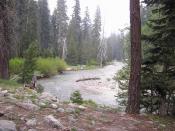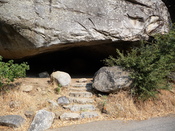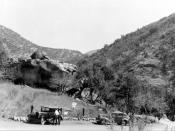Event: Cultural Anthropology research on Sequoia and Kings Canyon National Park, Three Rivers, CAAt the October 14 fieldtrip at Sequoia National Park, which included a tour of the Sequoia National Park archives, lecture on the impact of technology on archeology and a visit to Hospital Rock, the Cultural Anthropology class was able to further explore the historical influences of the local natives on our environment and culture today.
Our guide, archeologist, and Sequoia National Park curator, Mr. Tom Burge, reported that Sequoia National Park is an enormous archeological site for archeologists, biologists, chemists, geologists and anthropologists to search for and discover new artifacts that are used to help us understand and appreciate the culture of the Indian natives of this and surrounding regions. He stated that Sierra Nevada population has a history that is around 7,000 years old; however, only 10 percent of it has been researched and not many excavations have been done since 1965.
He further reported that most frequently found artifacts of pottery were first brought to these parts about 500 years ago.
Our first tour of the Sequoia National Park archives was located at the Foothills Visitor Center. The first artifacts Mr. Burge showed us was computerized digital photos of the most recent archival site, found at a small cave in Sequoias. It contained a small pot (used for cooking or collecting things), a rock (used for grinding), and a wooden stick (used for digging). The most amazing and rare artifact found at this site was the wooden stick, because Mr. Burge reported that wooden artifacts rarely stay preserved. However, because of the dry soil around the cave, the wood was able to stay preserved for few centuries. Mr. Burge then showed us storage of archival reports and records (non-acidic folders, papers, and binders with...


